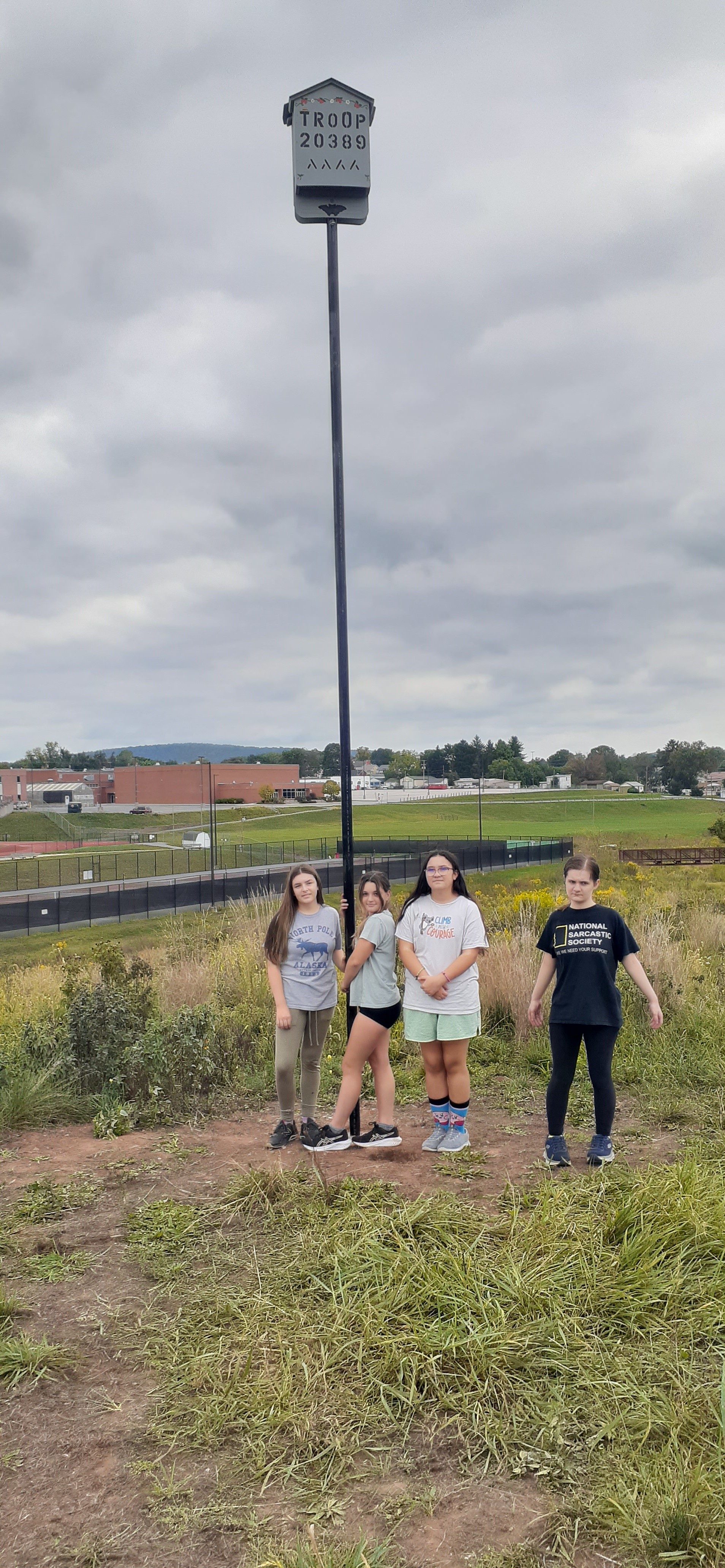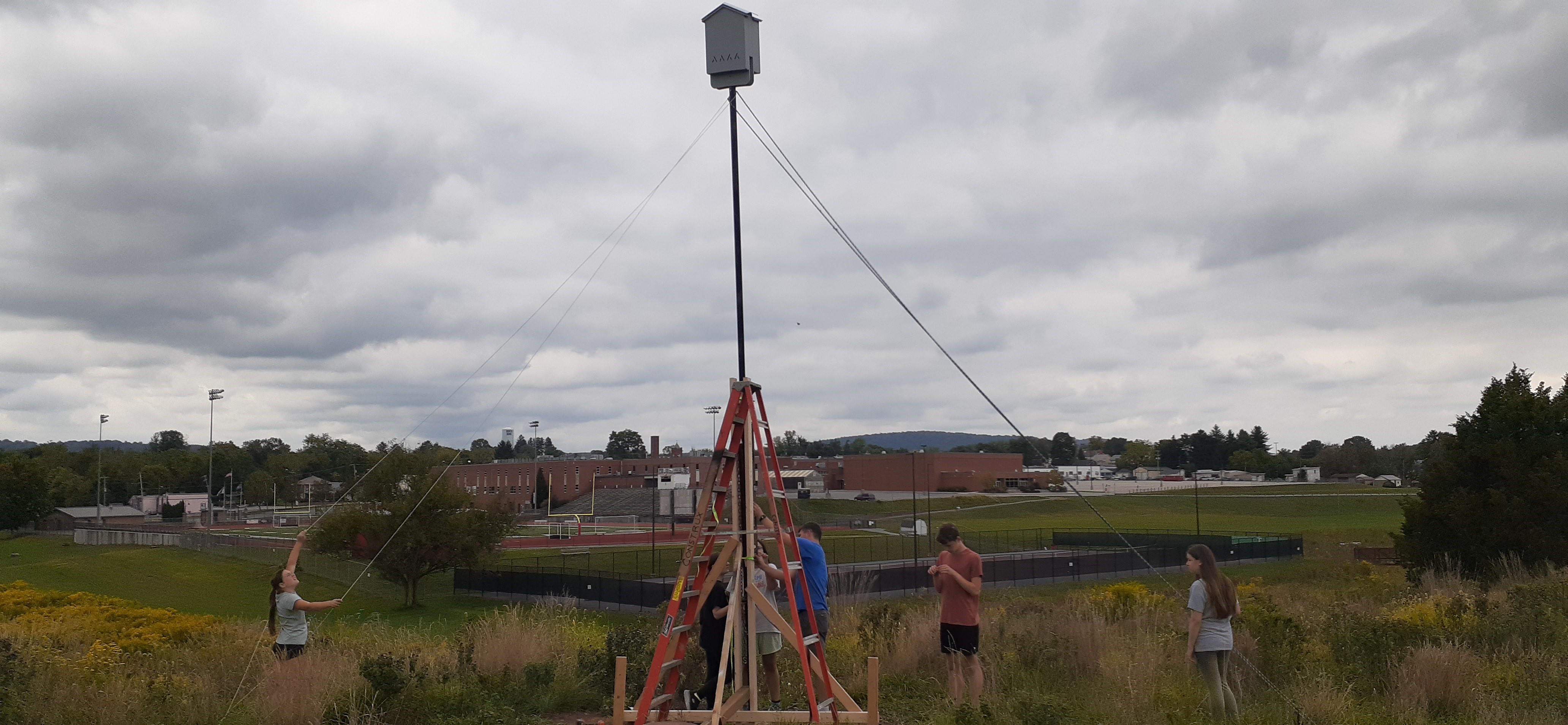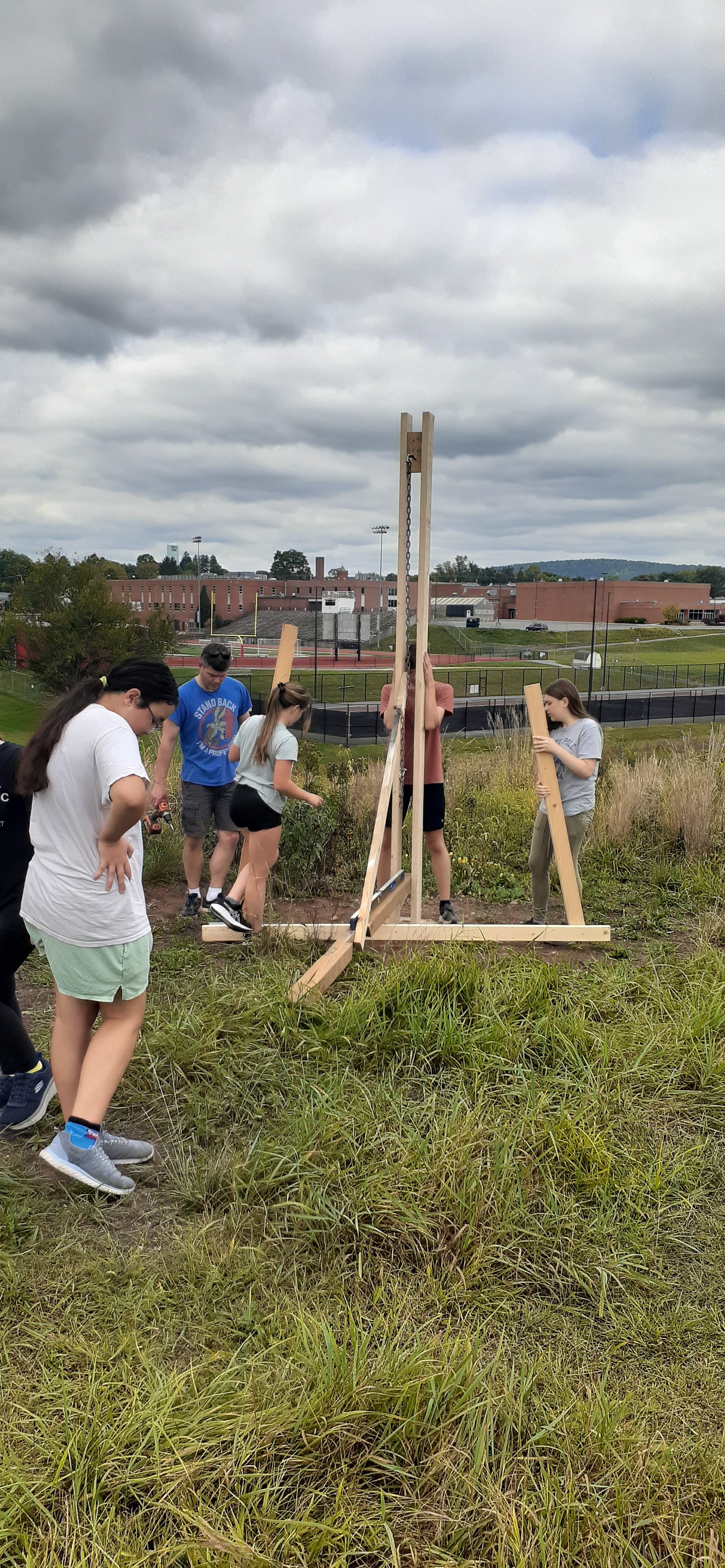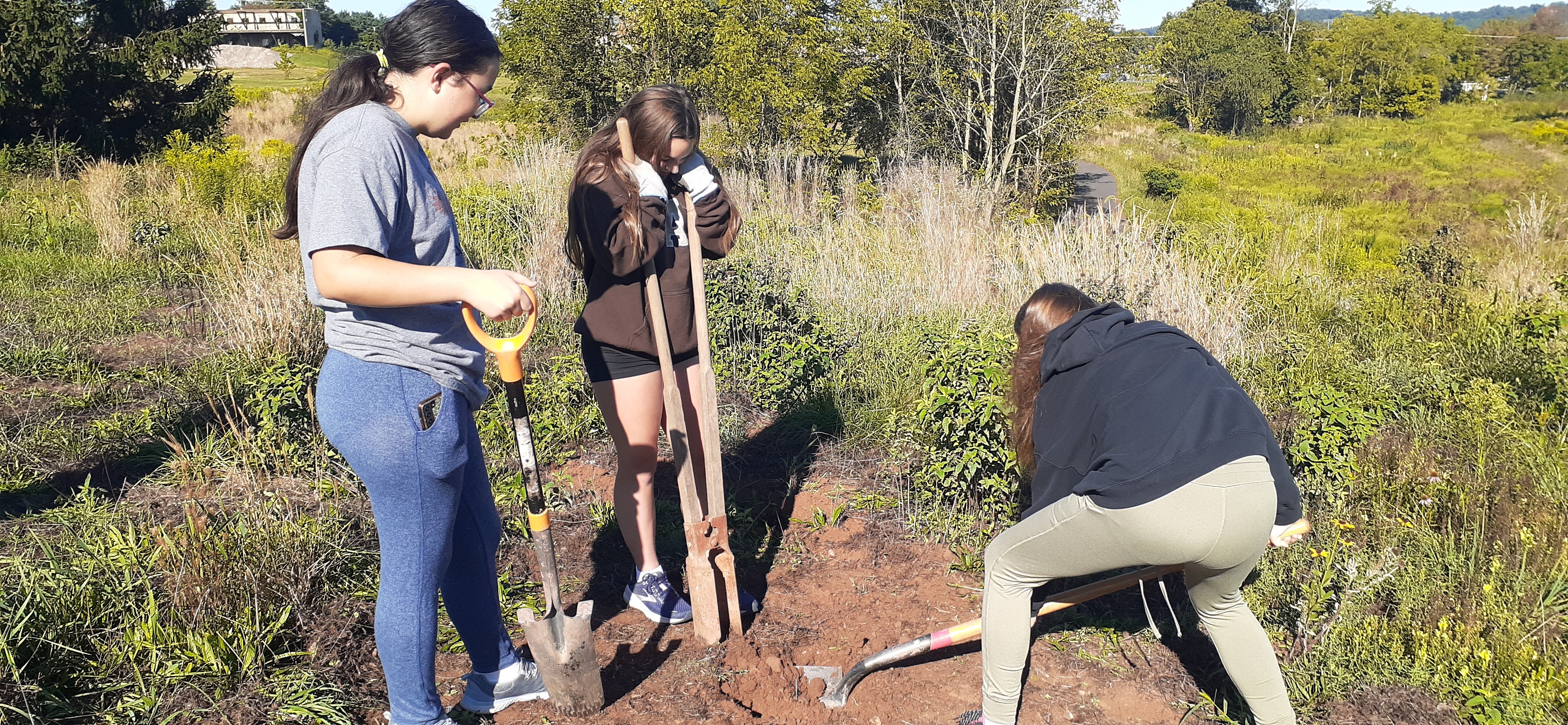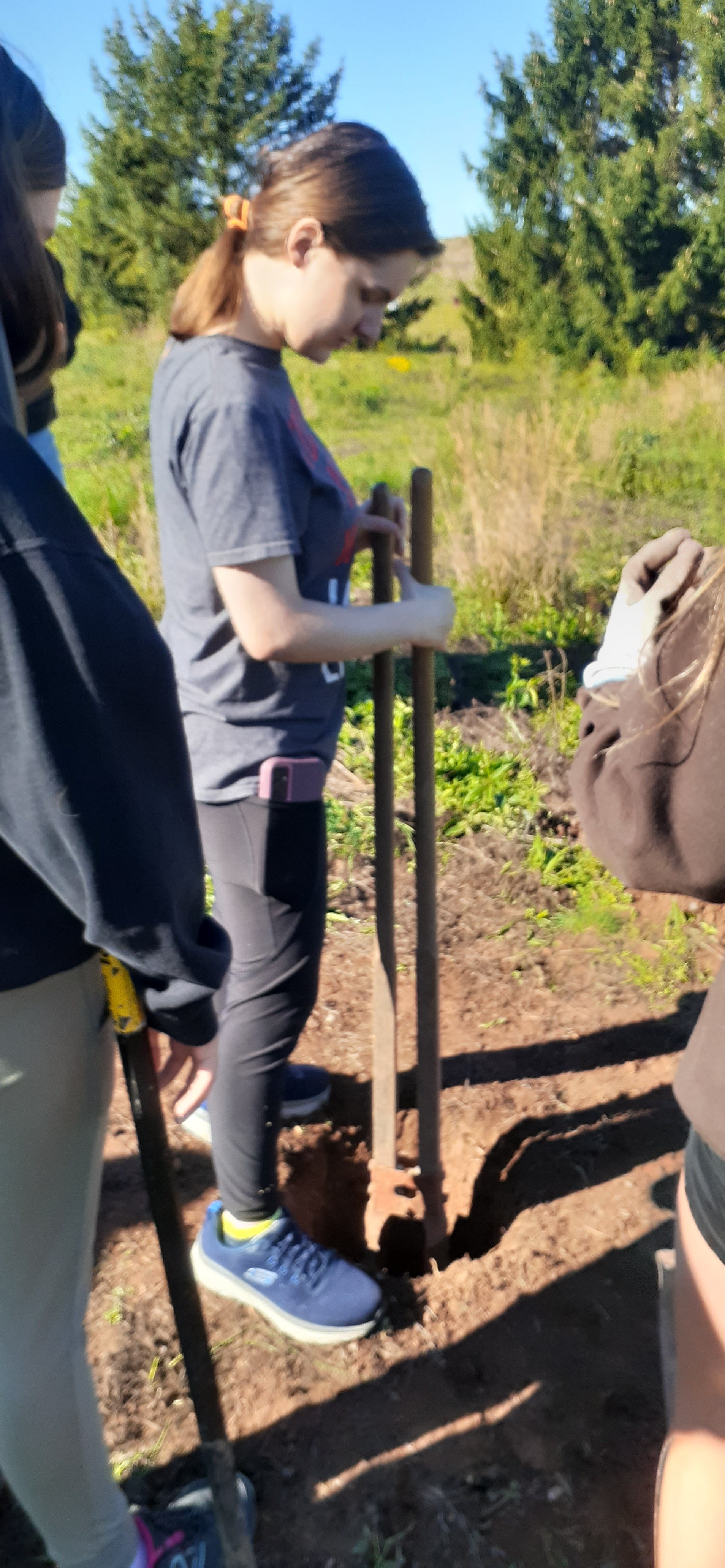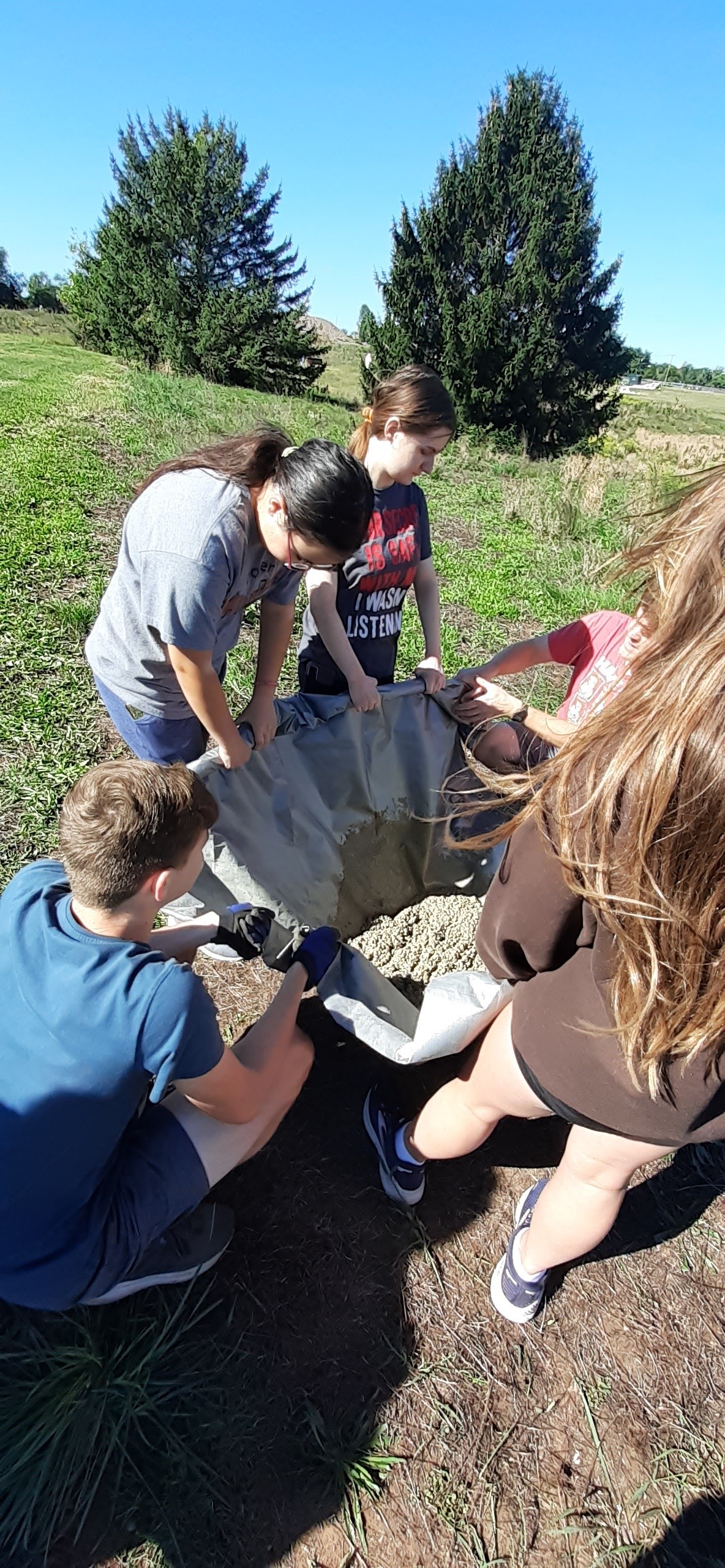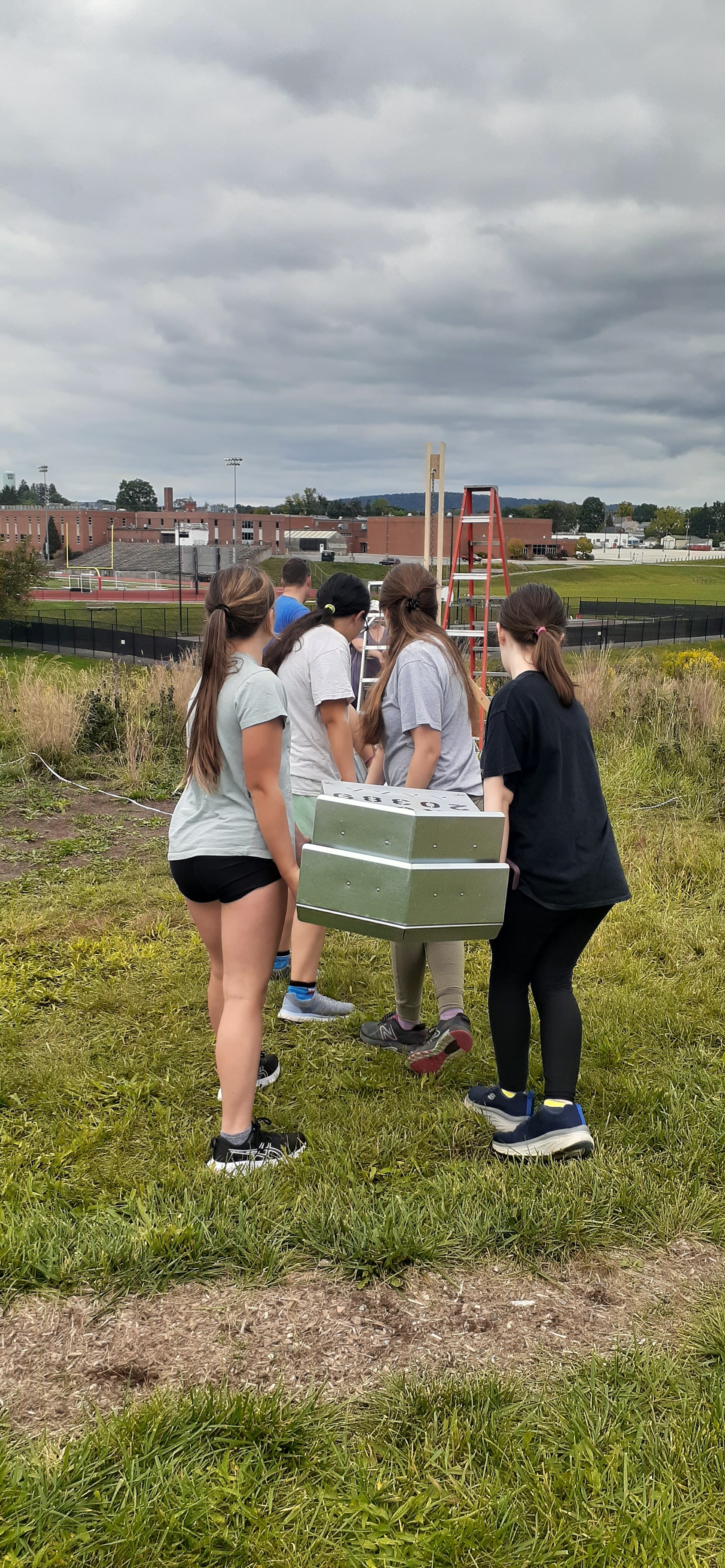The members of Troop 20389 (Rory Fogle, Grace Vandzura, Cailyn Morris, Violet Brauw) were working on their Silver Award, one of the highest awards in Girl Scouting. For Girl Scouts to earn the Silver Award, they must complete a larger project with a group or by themselves. Learn more about the Silver Award HERE. Troop 20389 decided to focus on bats and approached the Township about installing a bat box at Eagle View Park. We approved their project and they went to work! I’m happy to report that the bat box has been installed at Eagle View Park. The bat box is located on the hill close to the pavilion. Thank you Troop 20389 for choosing us for your project! – Chalet Harris, CPRP, CPSI (Parks & Recreation Director)
Rory Fogle (Troop 20389) describes the process of completing the project:
A single bat eats 6000-8000 insects a night, many of which are mosquitos. We,troop 20389, kept getting bit by mosquitos so we decided to build bat houses for our silver award in an attempt to bring more bats to the area and lessen the mosquito population. With the help of our group member’s father, we did just that.
The first step in our process was to make a base for the 20 foot pole, which the bat house would be attached to. We first chose a spot for our base far away from trees. It was important to choose a spot that is a good distance away from trees in order to give the bats time to climb into the bat house before predatory birds can get to them. We then dug a hole and filled it with cement with a pvc pipe the size of the bat house pole covered in plastic wrap so that we would be able to take out the pipe and be left with a hole in the base just big enough to fit the pole once the concrete had set.
While we waited for the cement to set we began the next step, which was to build the actual bat house itself. We started by painting the outside of the wood, leaving the inside unpainted so that it could rot a bit, which the bats prefer as it is easier for them to climb up that way. Once the paint dried we started to assemble the pieces. The first part of the house is for the male bats, it has 3 layers of nesting space and is on the side facing north since male bats enjoy being cooler. The second part of the house has 4 layers of nesting space, and is for the female bats and is facing south since the females like to be warmer. Between the two halves is a nursery for the pups to practice climbing. The nursery is a practice area so it is the only part of the house which has a floor to catch the pups when they fall.
We left a gap between the two boards used as the floor of the nursery, this is where the pole would later be attached. There are 4 entrances to the nursery, one on either side of the pole leading to both male and female houses. The houses are long with ventilation in the bottom. This is so that in the winter the bats can move to the top of the bat house where it’s warmer, and in the summer they can move down the houses near the ventilation so that it’s cooler. At the bottom of both houses is the entrance/exit where the bats can land on a board coming down off the back of the house and climb up into it. At the top of both houses is a compartment between the roof and the layered nesting spaces so that they can move between layers safely. Once we screwed all the pieces together we put on another coat of paint, and decorated the house. Once the paint had dried, we added the metal roofing and our bat house was complete.
Finally it was time to put up the house! We attached the house to the pole, that would then be put into the base. To put the pole into the base hole we constructed a catapult-like lever system that would allow us to efficiently and easily hoist the bat house vertically as shown in the pictures. Once the end of the pole hit the ground we lifted it slightly and lined it up to the hole in the base and placed liquid nails on the base of the post. We then lowered the pole into the hole. We took apart and moved our lever system. We had finally finished the project and are now waiting for the bats to find their new home.





